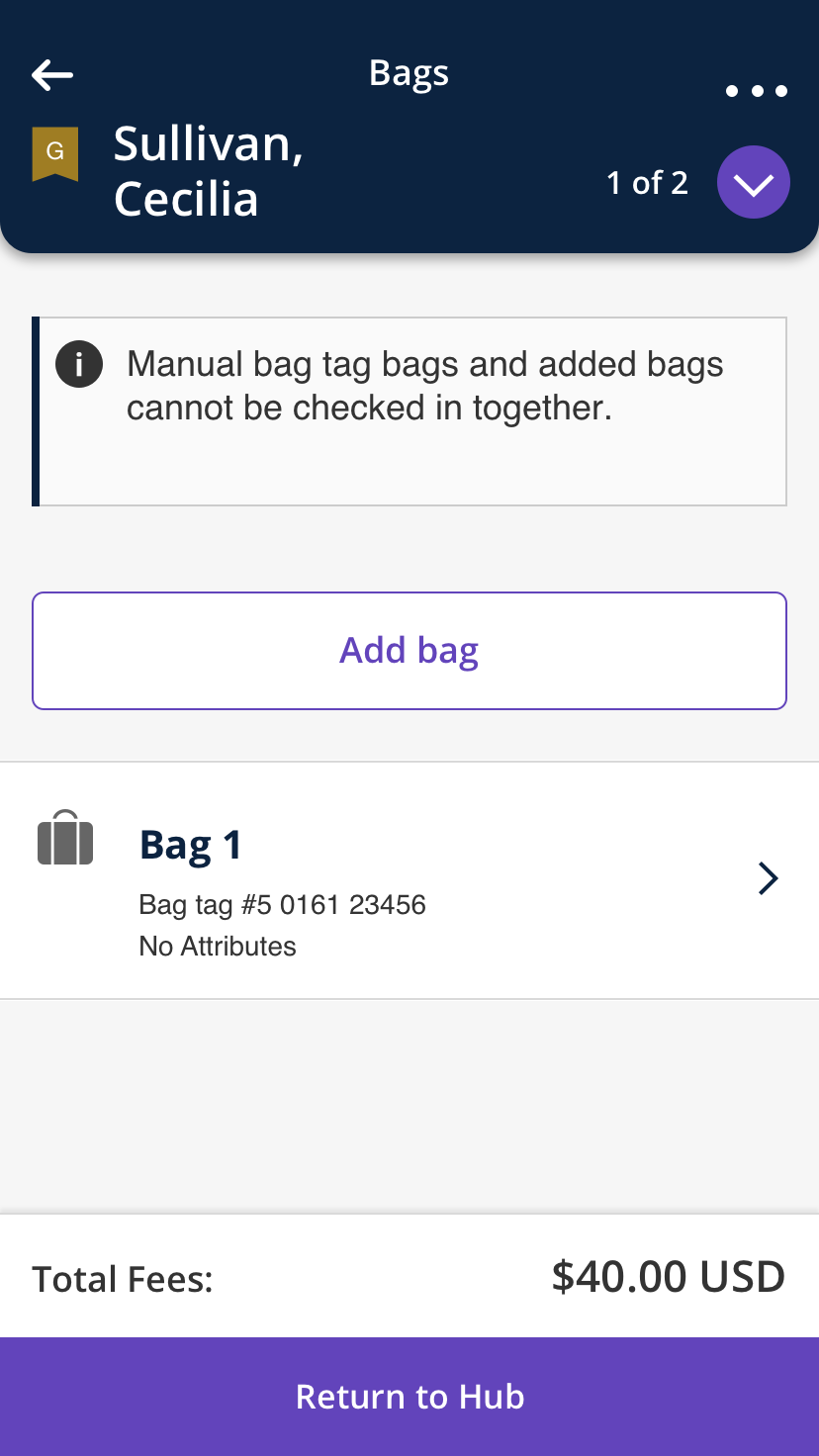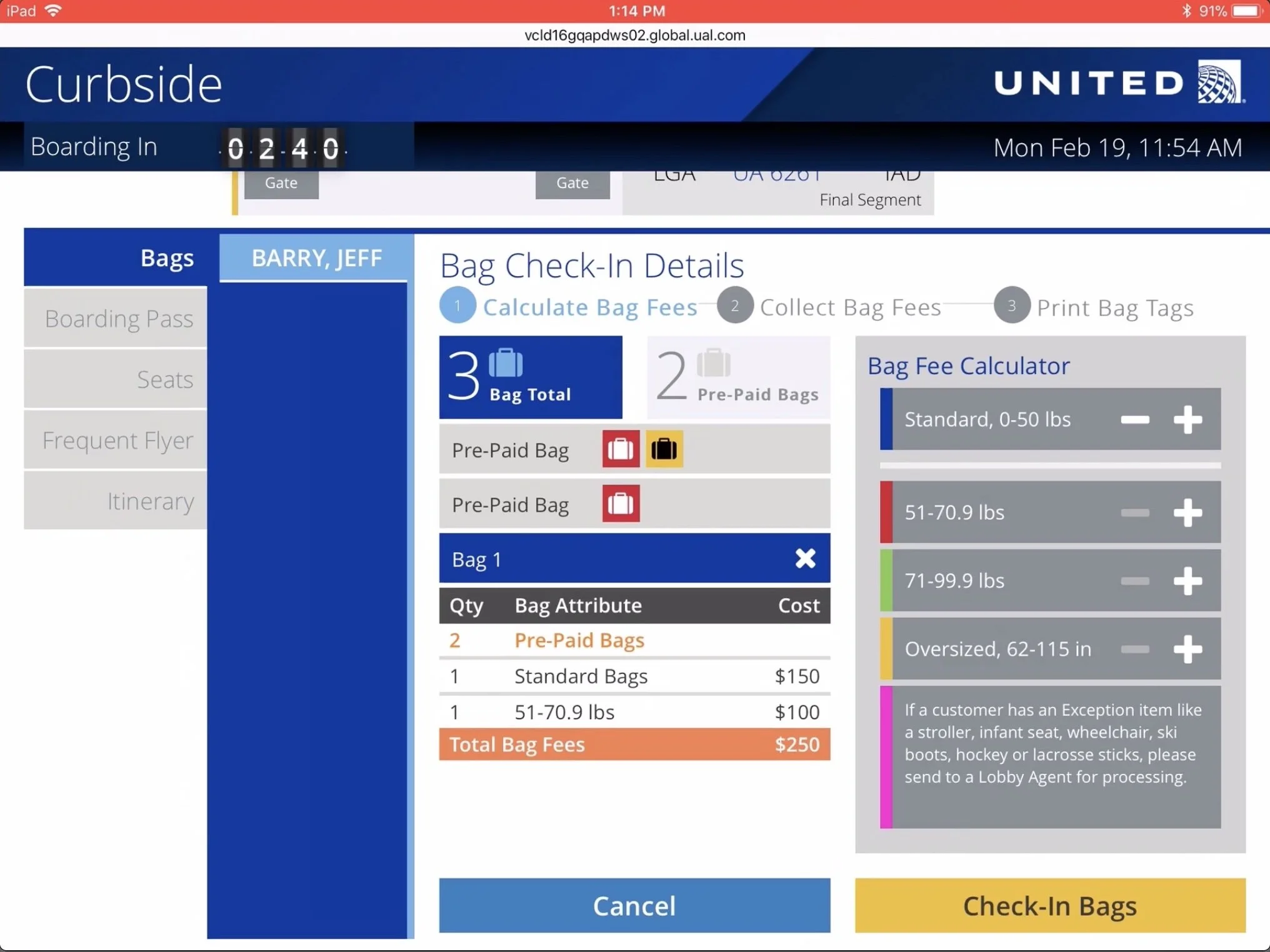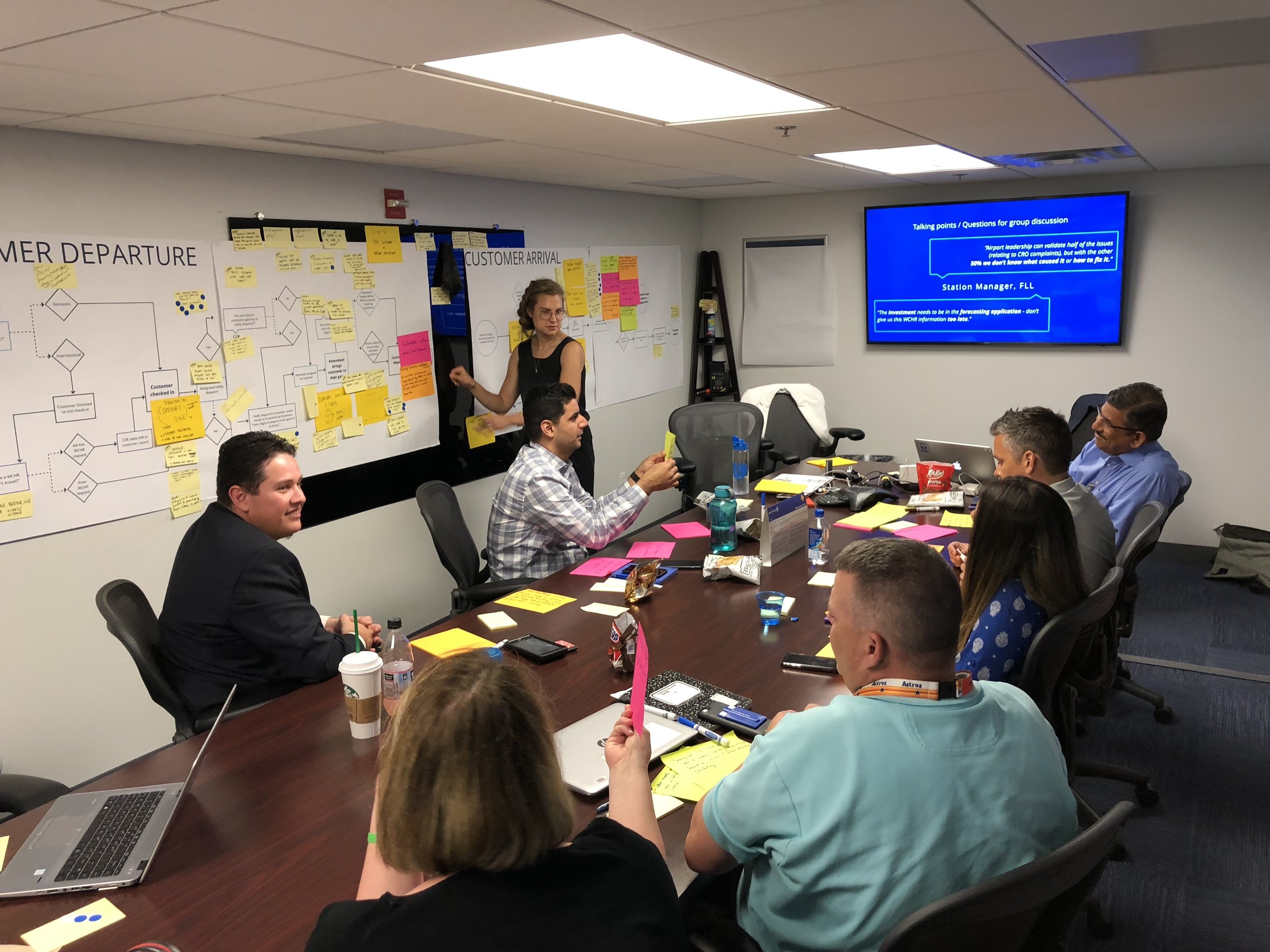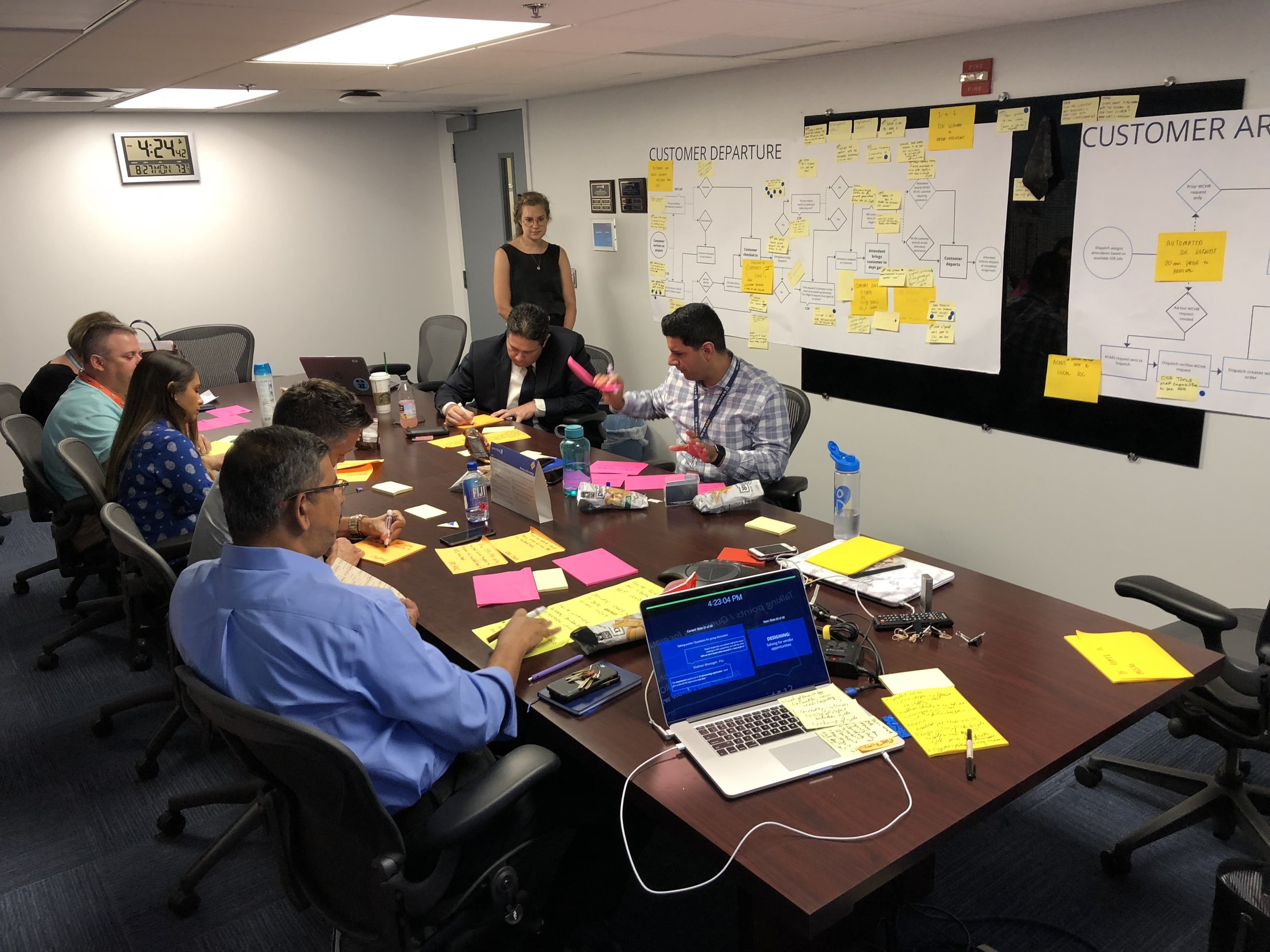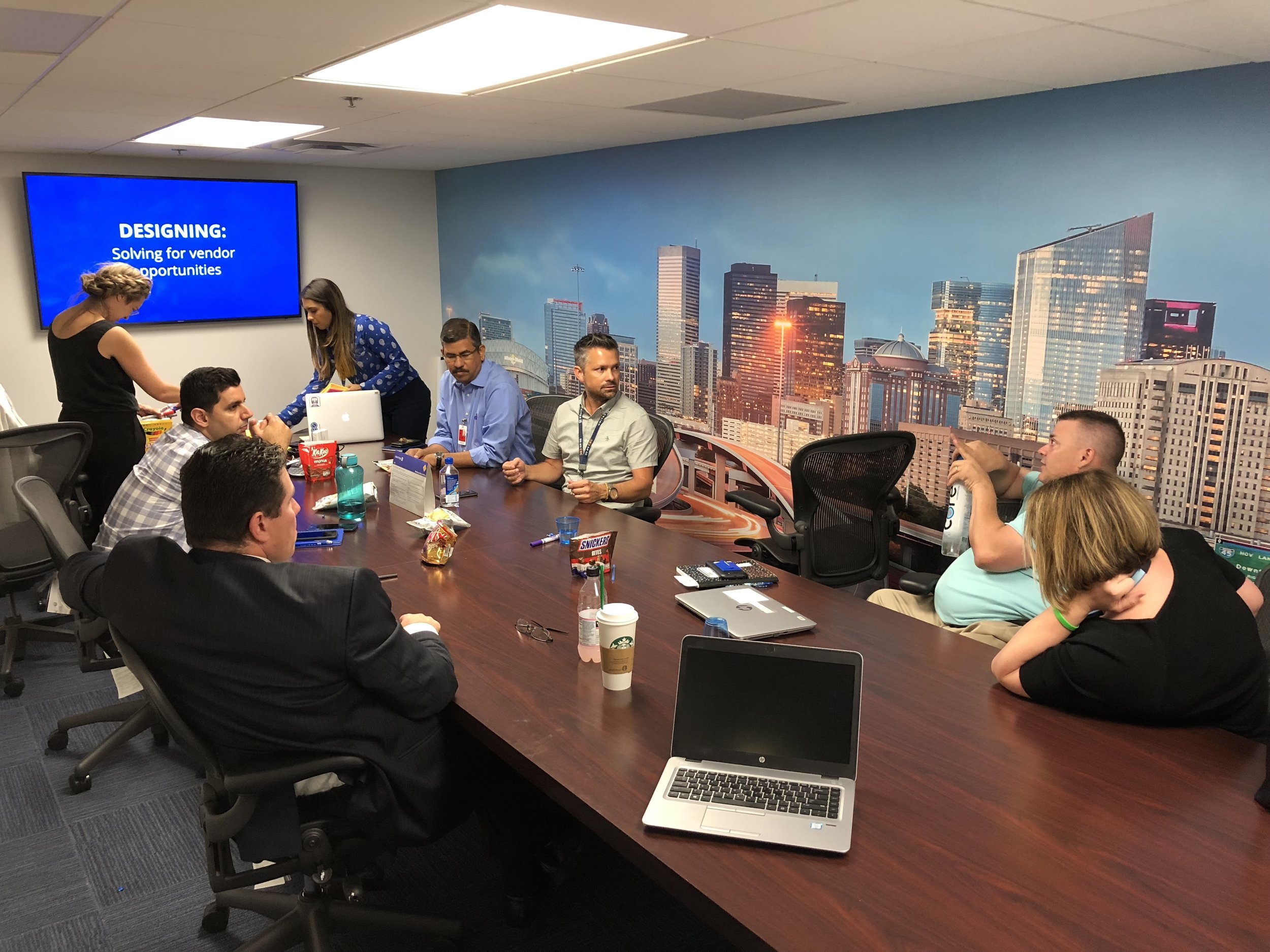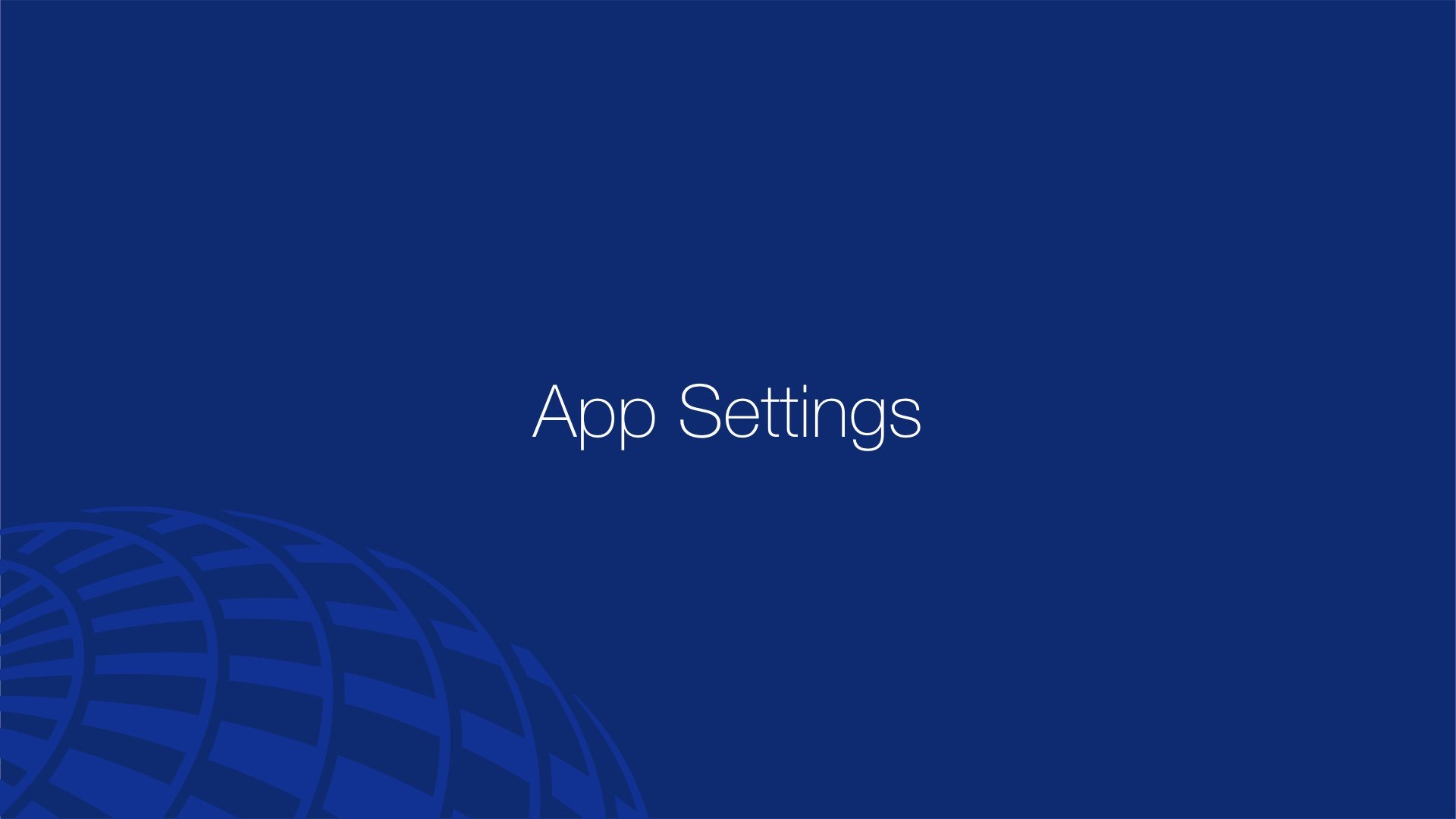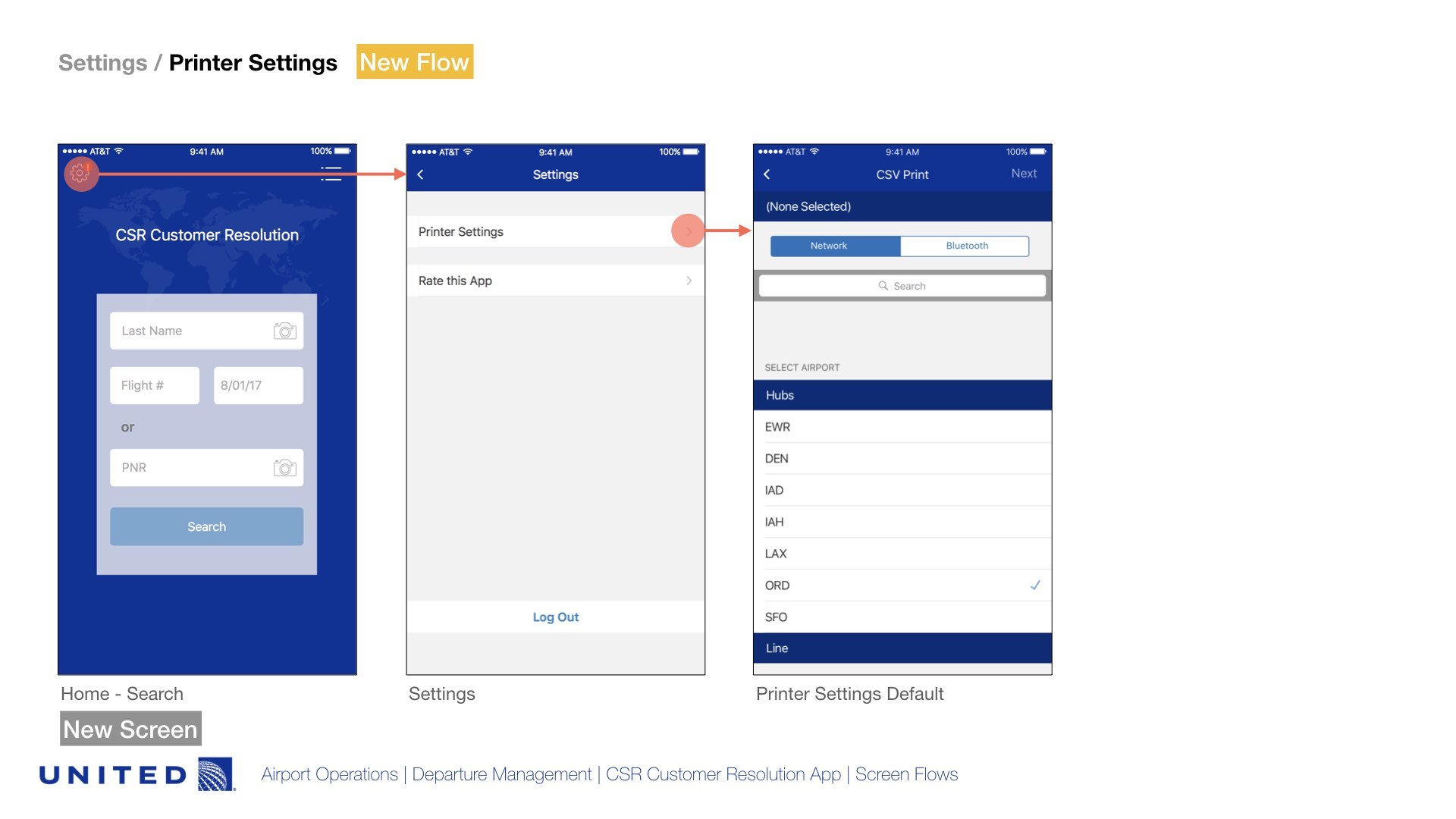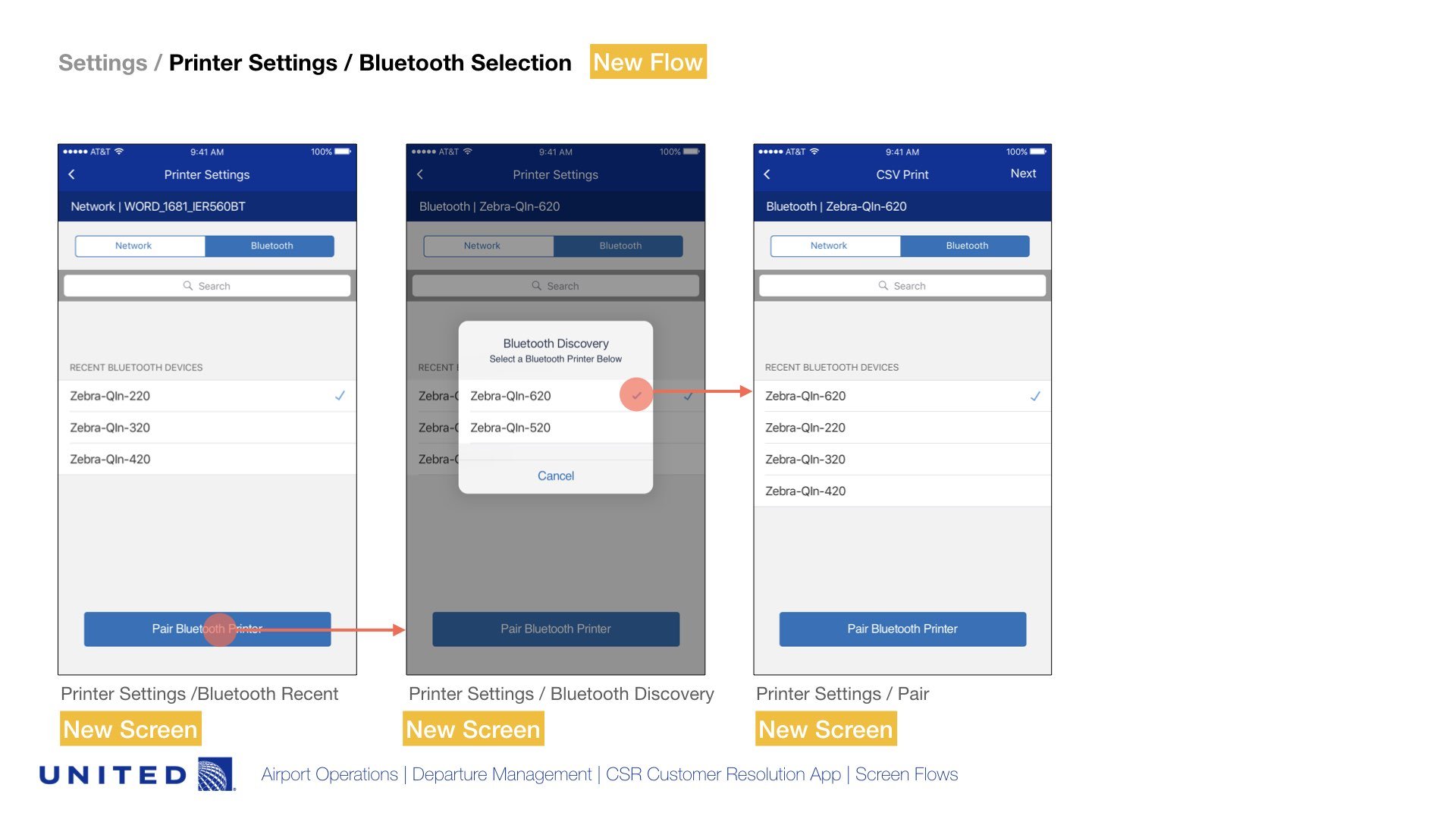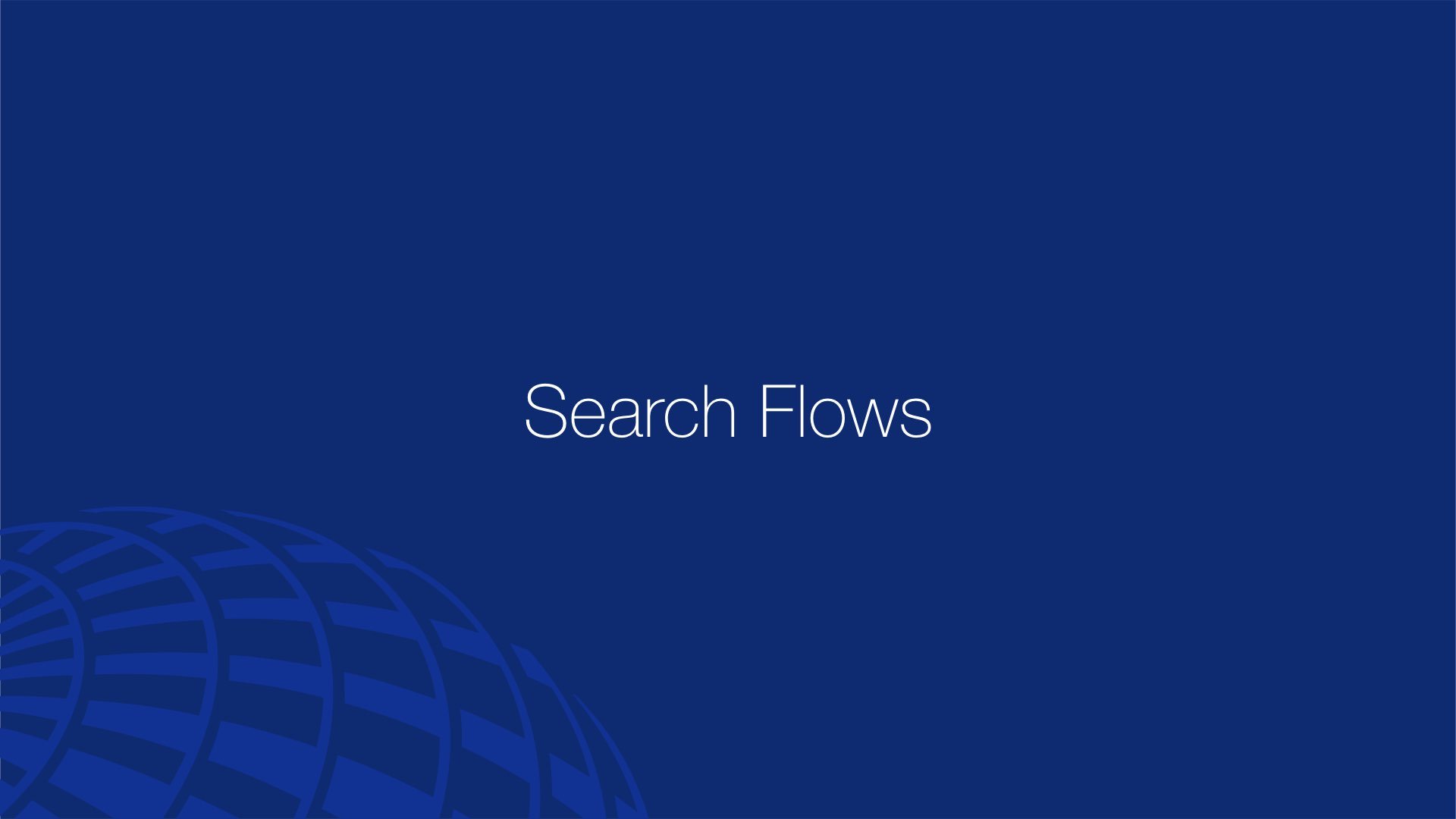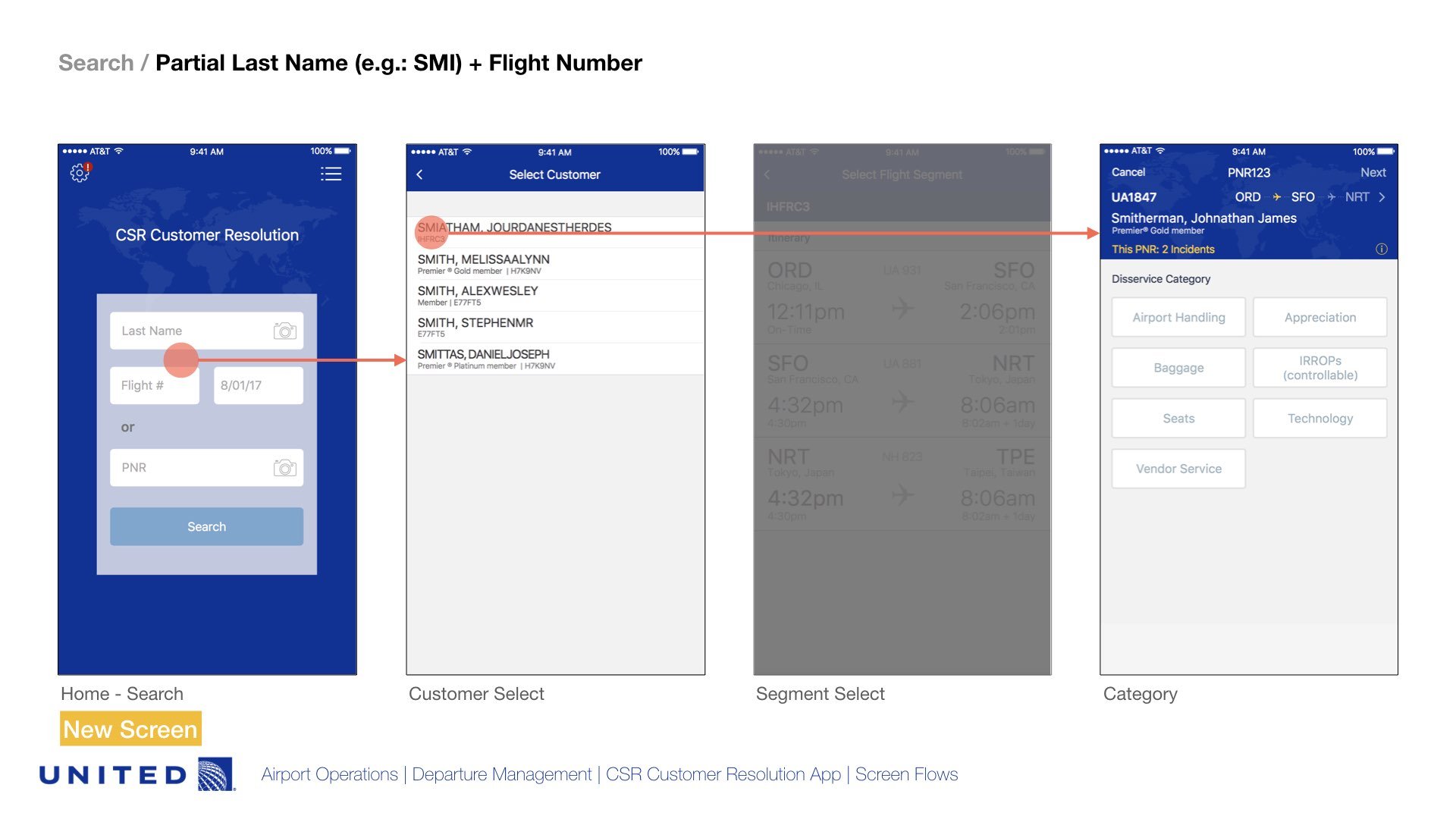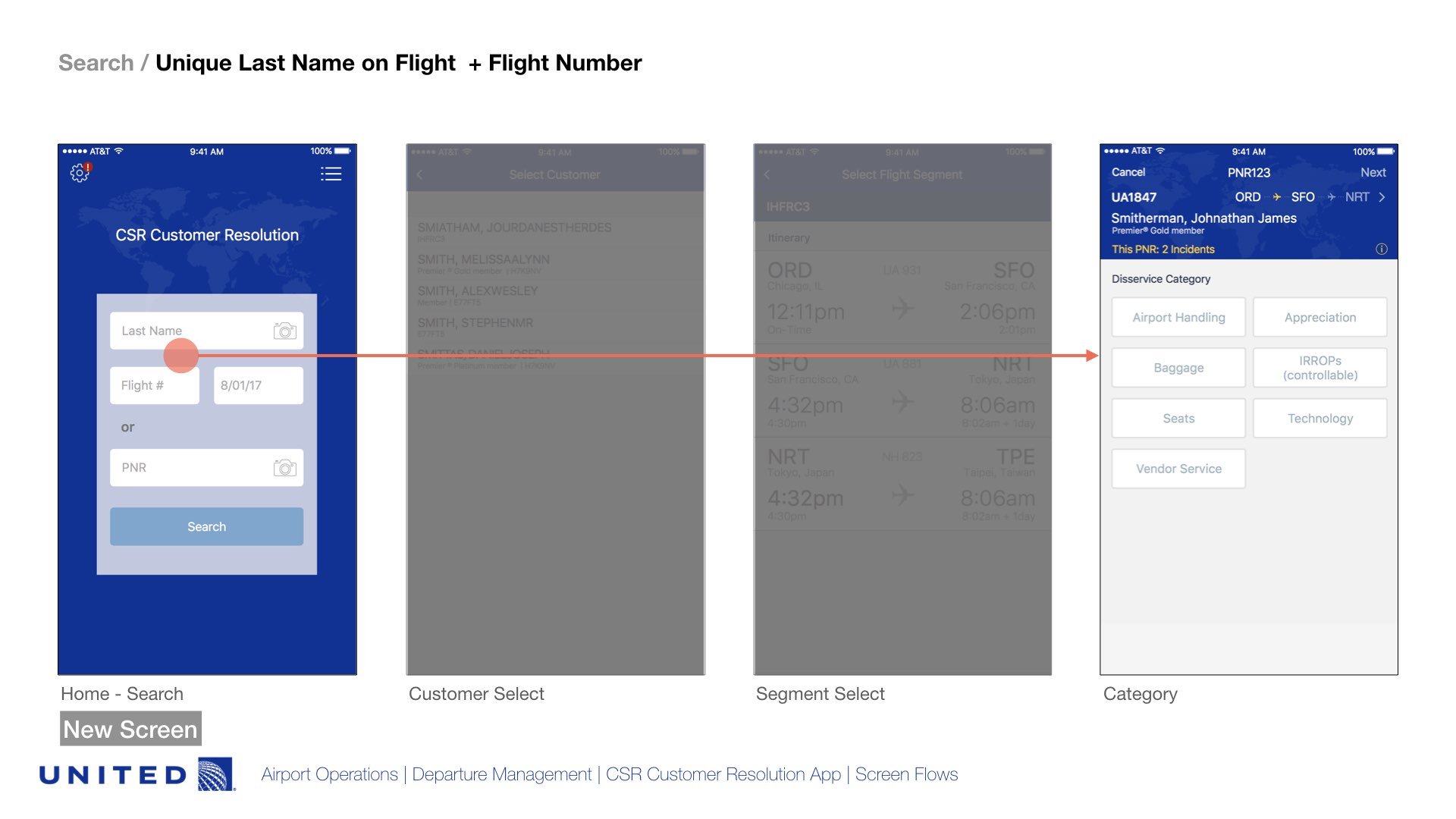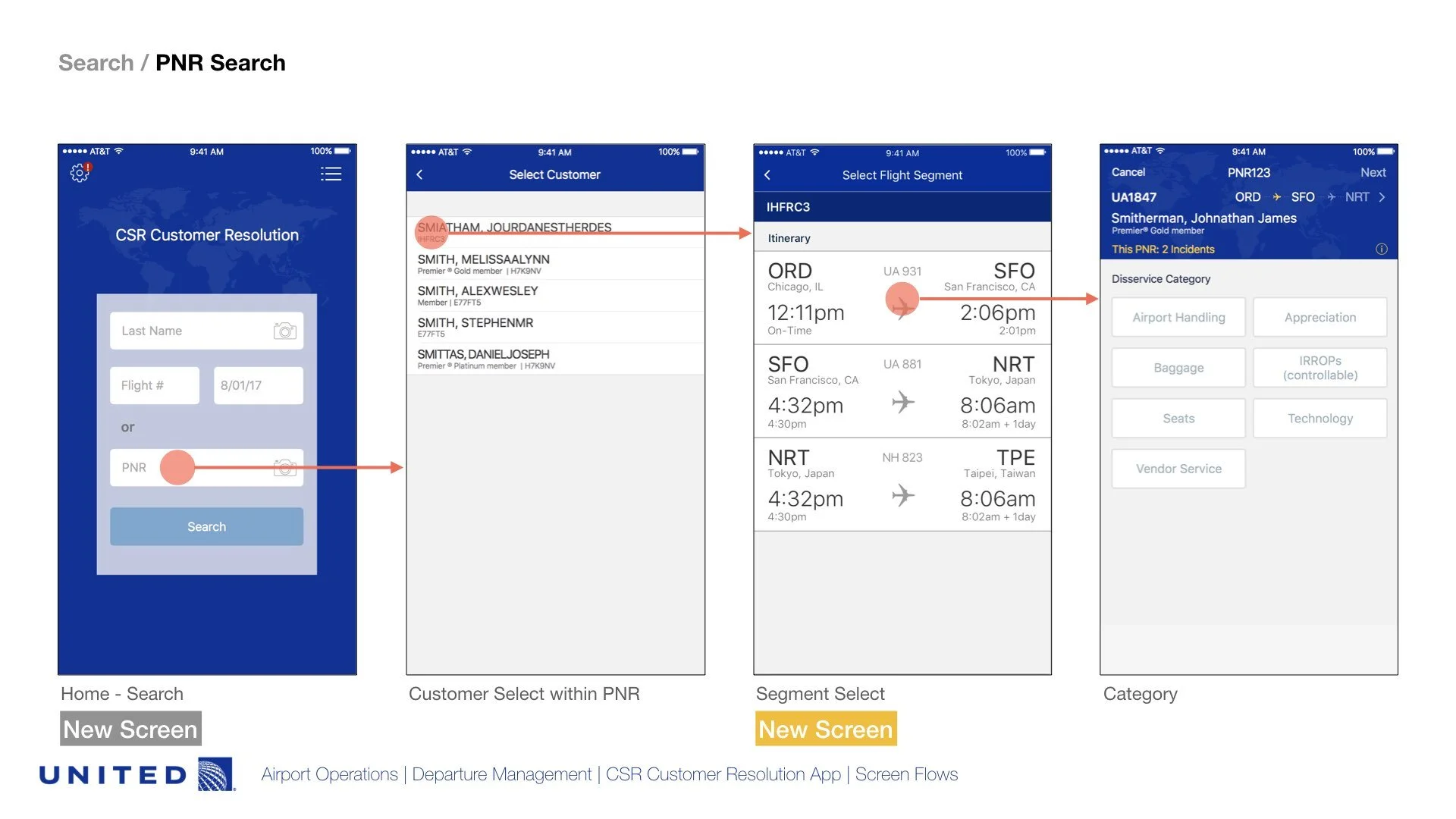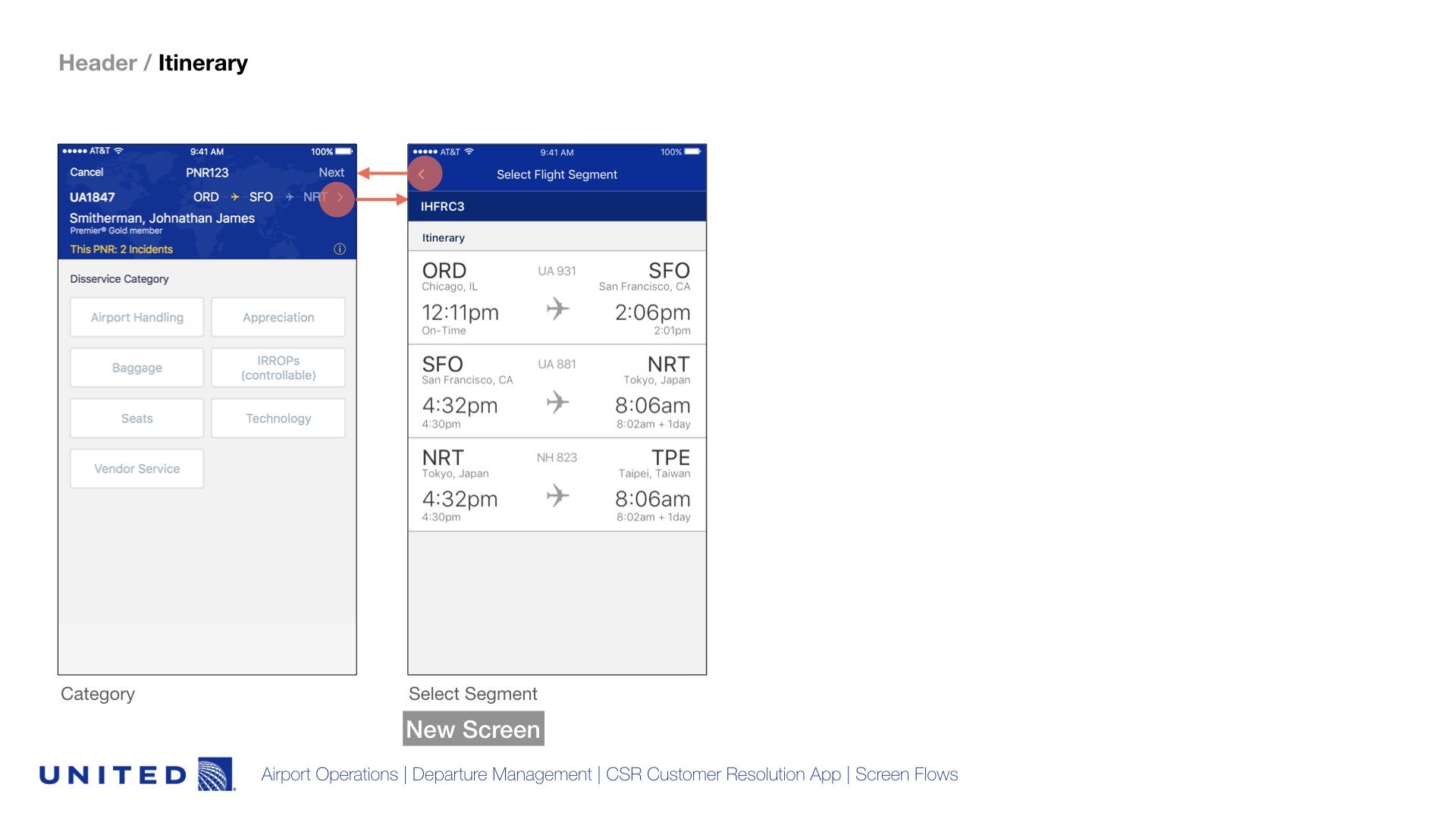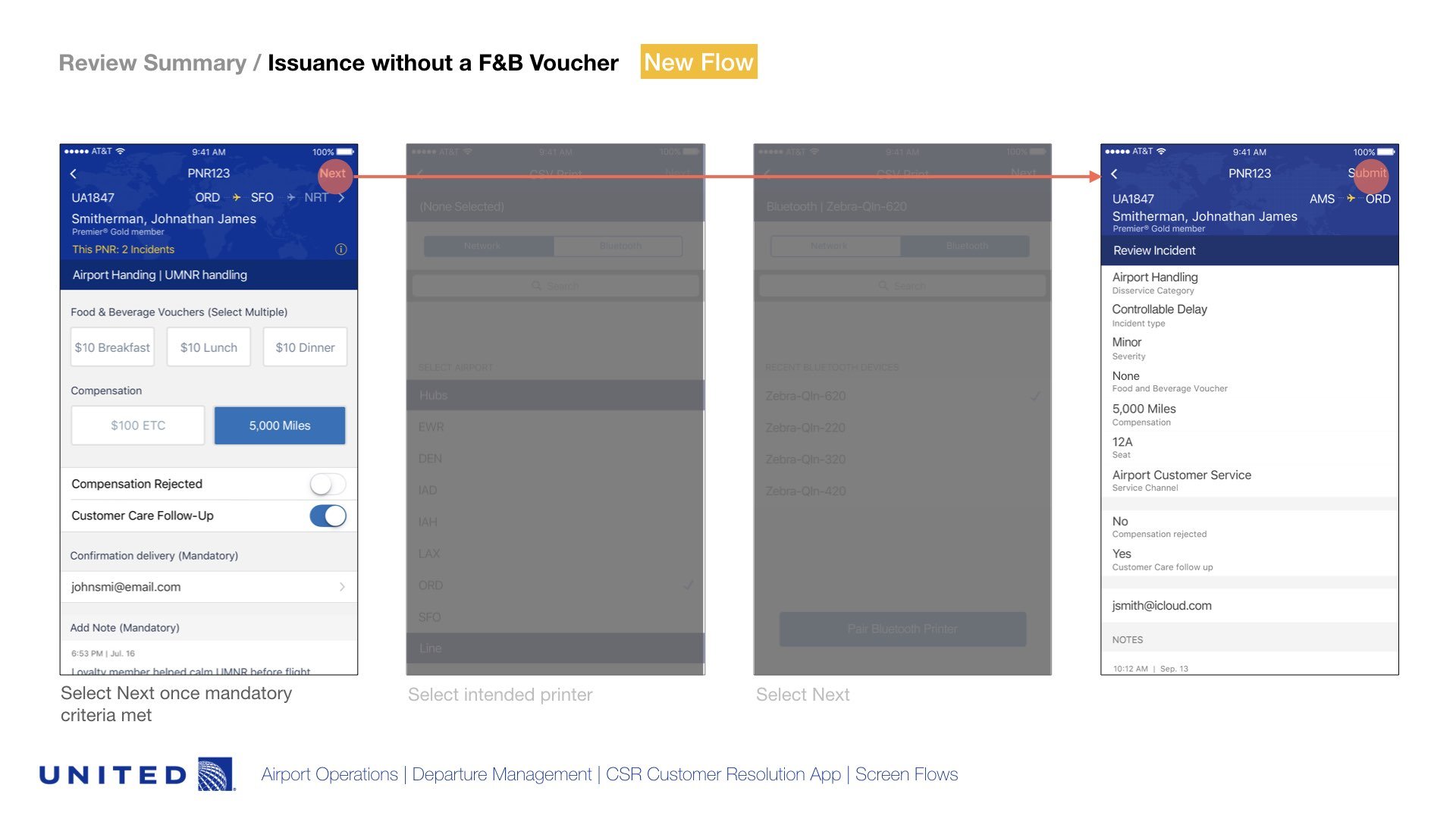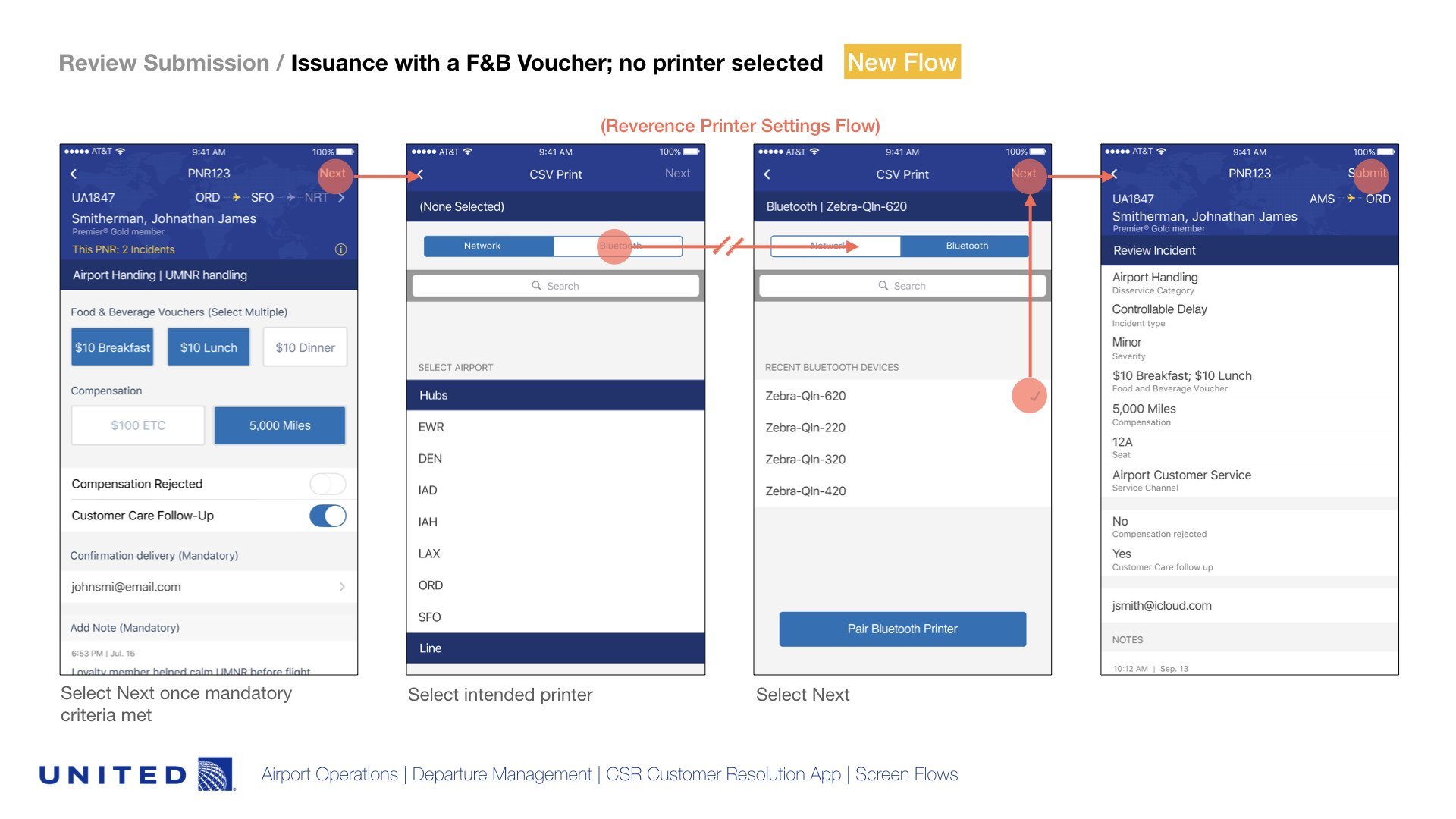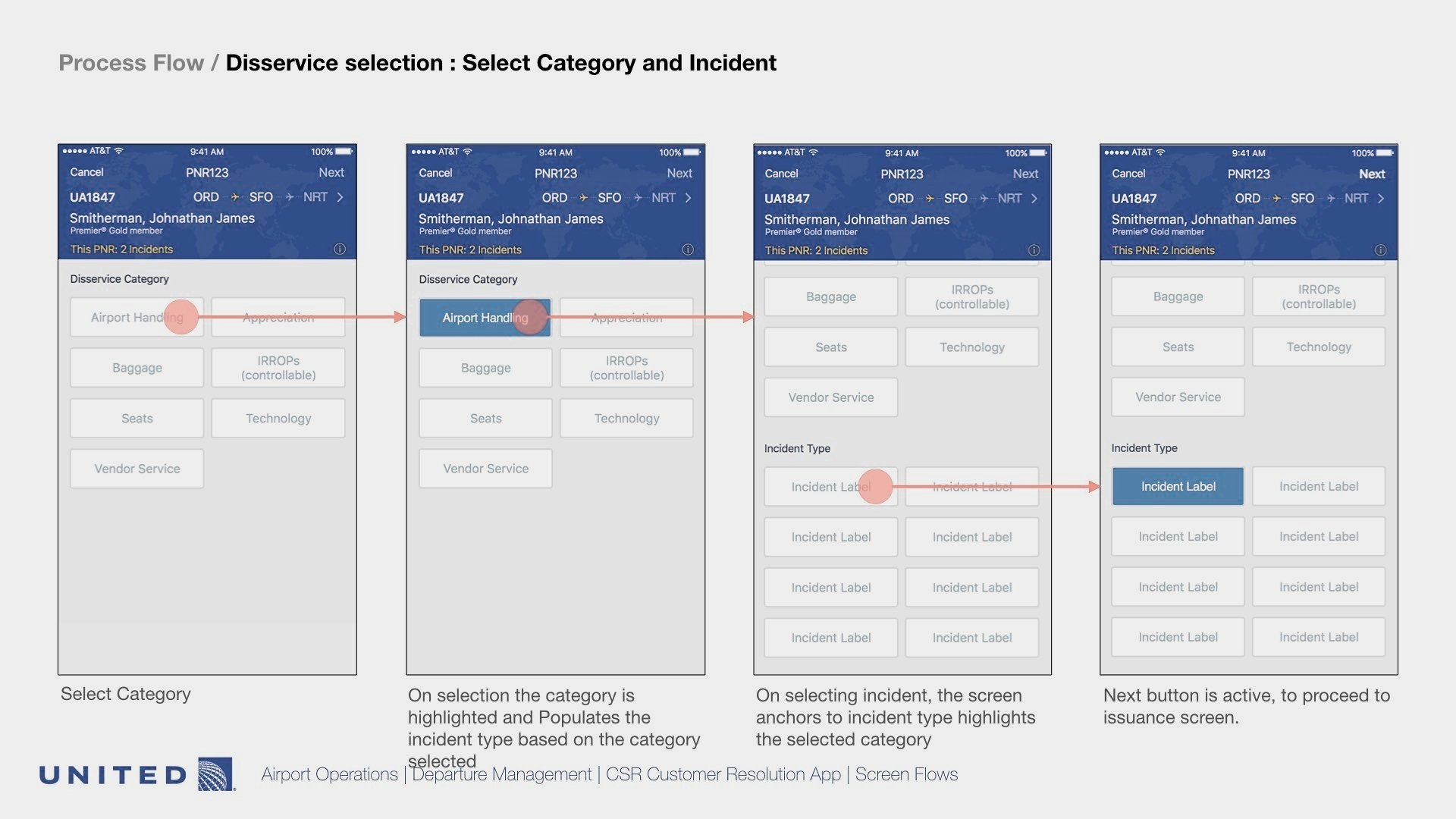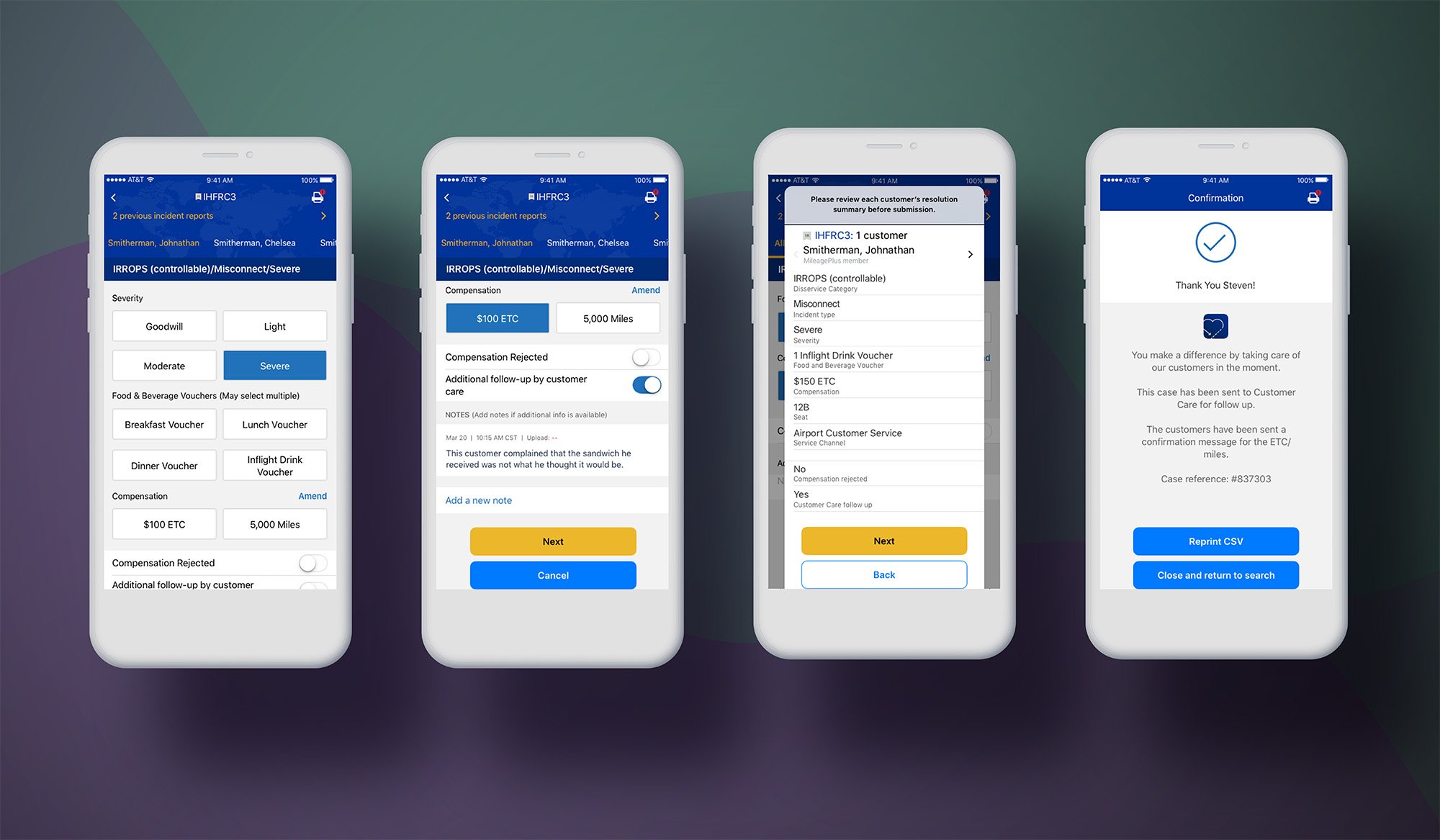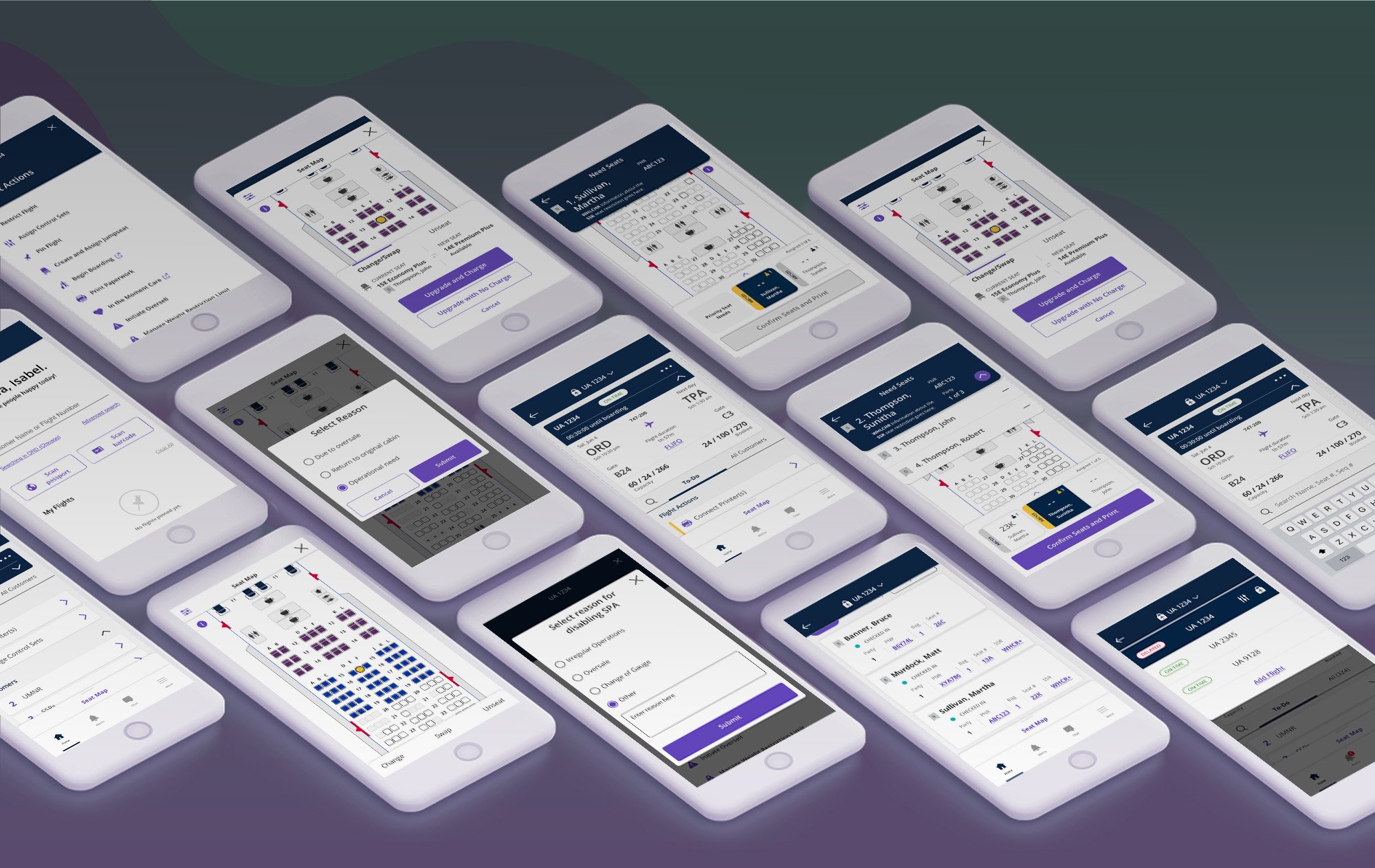
EX with Product Resolution
How I provided a rapid solution for agents to immediately provide customer compensation on a global operational scale.
Primer.
Joining United, I was asked to assemble a design team to manage the applications for airport operations as they were transforming from legacy terminals and desktop apps to native iOS. Within a year, I was managing seven operational business work tracks and hired a research team to improve our product management with over two dozen product releases. This was a heavily matrixed environment with multiple stakeholders and cross-functional development teams.
Much of my success came from spearheading and implementing the first agile design sprints at United in two or three-week cycles. Given the enormous complexity of global logistics to limitations of data-lakes, legacy 3rd party platforms or PaaS, much of my focus was getting business, engineering/IT and change management aligned on design releases.
Three-year summary: I stood-up a new practice principled in efficient, effective delivery and operational innovation.
-
2016: Agile migration + design foundations
1.I first audited the operations process. I drove business prioritization processes, implementing WSFJ Fibonacci scoring to improve change mgmt. planning.
2.I introduced and implemented agile design sprints on top of current waterfall platforms to accelerate a transition to more pure agile deployments off hybrid.
3.Accelerated significant timeline deployments from my agile best practices while gaining greater trust with end-user field agents at major airport hubs and increased usage of new application releases deployed.
4.Within 9 months, my application management expanded from two core applications to four.
-
2017: Design Thinking Ops efficiency
1.I began training various product teams in design thinking. With effort sizing, I developed a scaled approach to design thinking sprints – from a few hours, to a condensed three-day discovery sprint for new application experiences.
2.I expanded this with field teams at airports, conducting design thinking workshops at airport meeting rooms that connected engineering, business/product and field CSR agents.
3.By year’s end I was managing three additional mobile applications in our operations based on my delivery excellence.
-
2018: Innovation + re-platforming
1.2018 led “re-platforming” focus to consolidate ops applications into one design and platform experience.
2.Mid-year I was managing five additional applications, recognized with an Employee performance award.
3.I was asked to manage service design roadmaps with future gate and lobby innovation including wheelchair staffing optimizations, facial recognition for boarding, and IoT initiatives including unaccompanied minors.
4.I also envisioned iterative future gate experiences that would sunset legacy hardware using augmented reality tools to evaluate.
• $43.25 Bn in 2019, 4.74% YoY
• $6.7 Bn increase (2016 to 2019)
• +1,700,000 Flights/year +4,600 Flights/day
• 148 MM passengers (2017); 100 MM loyalty members
• 354 airports served, 74 countries
• 91,526 Employees: 23,065 Fight Attendants, 13,831 Pilots, 16,129 Airport Agents
• $43.25 Bn in 2019, 4.74% YoY • $6.7 Bn increase (2016 to 2019) • +1,700,000 Flights/year +4,600 Flights/day • 148 MM passengers (2017); 100 MM loyalty members • 354 airports served, 74 countries • 91,526 Employees: 23,065 Fight Attendants, 13,831 Pilots, 16,129 Airport Agents
Applications I product managed with my team at United (13 apps)
The Challenge.
Compensation was an ongoing development at United Airlines - especially as policy changes required necessary updates. This was initially started in the (desktop) Aero application.
At one point, United Airlines experienced turbulent media coverage that raised a complete customer experience heuristic. The company discovered that customer expectations had significantly changed from being on-time, to expecting prompt resolutions. They were not concerned with FAA, DOT, organizational policies, and technical or data infrastructure limitations.
Our timeline allowed only four months for the native iOS application to be deployed to stations world-wide before the holiday travel code freeze.
The Ask.
Provide a solution for agents to immediately provide customer compensation for any irregular airport or operational event. This effort will mitigate conflicts while conveying a brand that is customer focused and prompt.
Early Exploration in Desktop Aero
To be upfront, I struggled with this project as we had so many variables that did not have clear business rules easily applied and resolute. System-wide we also had different policies for each region.
Consequently, I expressed dissatisfaction with this early project which was never fully integrated into Aero. A key argument was our mobile-first initiatives underway where after analysis, the currently defined compensation complexity would not perform well in a final mobile presentation flow.
Early, Collaborative Business Planning
I held several design thinking workshops with several policy and customer service teams on taxonomy.
One of our Categorization exercise.
A year later, after MAP updates were successful enough for agents to trust the platform, we began planning for compensation within the app.
Coincidentally, a major overbooking event made national headlines, tanking the brand. Leadership immediately prioritized the app as a significant priority to expedite delivery within only four months.
We went to work.
Compensation outcome mapping
Exploring potential decisioning, interactions
Explored simplifying business policies with decision tree task flow.
The success of the experience required a flow that would solve multiple business dependencies with a compensation agreement by the airlines that empowered employee teams with CX success.
Solved complex compensations with mind mapping.
The success of the experience required a flow that would solve multiple business dependencies with a compensation agreement by the airlines that empowered employee teams with CX success.
The Research.
We conducted initial research with 23 field CSR/CSM agents in both flight and airport at four different hubs. We asked qualitative questions as well had them perform tasks on an early prototype for observation and feedback.
The results were very promising at first and the agents responded well to the early prototype flows
The Prototype.
We tested an early prototype with field agents - both airline and airport CSR agents to gather their feedback on the speed and ease (UX) for field use. Agents responded that the app was fast, easy to evaluate, and flowed clearly to the desired goals.
The Research Report.











The Epiphany
Although the prototype app was regarded as a huge success based on our prior testing performance, we could not celebrate.
Agents confided that because of current policies, they can commonly be reprimanded or questioned for providing compensation to customers. This can impact their staffing or placement for promotions.
The Pivot.
Further qualitative findings with the field agents found that regardless of how fluid the application is architected, they would avoid it due to corporate policies that focused on operational effectiveness over customer experience.
Our research helped better shape the effort to prioritize the company ethos moving forward that would allow for greater adoption of the application through a program that became known throughout the airline as Core4.
Core4 Promise on an aircraft fuselage
“Over the last few years, we have taken off on a journey to transform our airline, guided by the core4 standards of Caring, Safety, Dependability and Efficiency. We cannot live up to any of these core values if the choices we make – for our customers, each other and our planet – are not driven by integrity.”
2018 United Airlines Supervisor Conference
The Flows.
After rapid sprint ideation, designs and flow evolved articulated from field agent feedback that was documented out of Sketch for business to review changes and provide feedback.
Forbes: How To Fix United Airlines' Culture Problem
“United Airlines’ employees seem utterly incompetent. The recent dog death incident is only the latest in a string of situations in which United employees have screwed up. But the incidents don't reflect a competence deficit at the airline; they reveal a culture problem -- and United's leaders must take specific actions to fix it.”
The Experience.
Pixel-perfect sketch design deliverables with asset library
The final designs of the application were delivered in four weeks in time for development and QA to complete and deploy two months later. United was the first airlines to deploy compensation in real-time to customers including food voucher, financial or loyalty points.
App Settings & Service Lookup
Disservice Issuance Scrolling Flow Simple
Disservice Issuance Appended with Printer Select
CNBC: United Airlines is sending employees to compassion training
The airline recently rolled out a new program called “core4.” Thousands of employees will go through an ambitious four-hour training session that aims to teach workers to be efficient (think on-time departures), ensure operations are safe and do it all with a smile.
Annotations for development
Want more? A deeper case study with Phase II is available. Plus 9 other studies.
Applications I delivered and managed at United (13)







